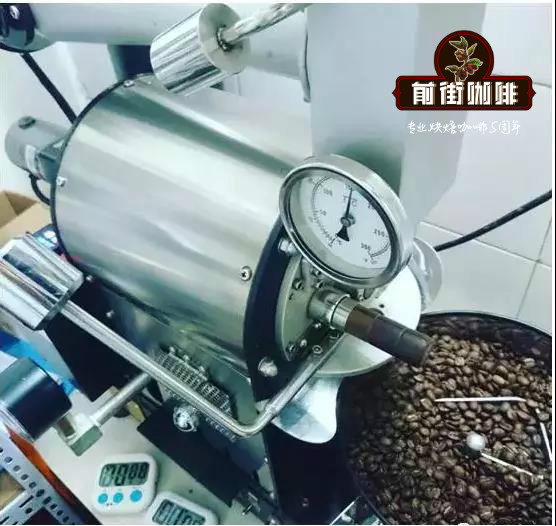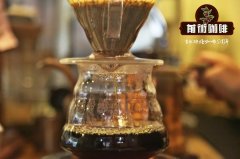Kenya Sika producing area introduces in detail the treatment and flavor characteristics of Kenyan Sika coffee beans.

Professional coffee knowledge exchange more coffee bean information please follow the coffee workshop (Wechat official account cafe_style)
Grade AB washing of Wamgumar treatment Plant in Sika, Kenya
Although Kenya and Ethiopia are adjacent to each other and both are big coffee producers in Africa, there are obvious differences in coffee varieties and flavors. Kenyan Sika coffee is mainly characterized by its strong berry aroma, grapefruit and black plum acidity and sugarcane sweetness; it is layered and moderately mellow, so it is loved by many coffee lovers.
Because the equator runs through the middle of the country, and the overall border is within 10 degrees north and south latitude, Kenya has two rainy seasons every year, and coffee can be harvested twice. Coffee is mainly grown in volcanic lands 1600-2100 meters from the capital Nairobi to the mountains of Kenya, as well as Mount Elgon on the border with Uganda.
The special flavor of Kenyan Sika comes from two unique ways:
A unique variety
Although Kenya has introduced bourbon species, India's Kent, and Jamaica's Blue Mountain Tibica, the world-famous bourbon varieties SL28 and SL34 first appeared in Kenya in the 1930s. These two varieties give Kenya coffee a unique sour BlackBerry flavor.
Kenyan Sika washing method
Kenyan coffee is famous for its rich layers and clean taste. Its unique Kenyan-style washing method goes through two washing and fermentation procedures, commonly known as "double fermentation". It is a rather complicated but delicate method of raw bean treatment. This treatment is more time-consuming and water-consuming than ordinary water washing, so Kenya coffee is more expensive, but it is also an indispensable method to create a unique sour flavor and clean taste of Kenya coffee.
First washing and fermentation
After the coffee cherry harvest, the beans will first be picked by the specific gravity of the water flow; the principle is that the coffee fruit itself is screened by the difference in density and quality; the coffee beans with high density (heavy weight) will sink into the water, while the coffee beans with low density will float. The coffee fruits with high mature quality have high density, so they are screened out for further treatment.
After selecting the high-quality and ripe fruit, the pericarp is removed, washed and soaked, and the pectin mucus attached to the outer layer of the raw bean is fermented. Pectin has natural sugars and alcohols, which play an important role in the development of sweetness, acidity and overall flavor of coffee.
The fermentation time is as long as 24 hours. after fermentation, 80% of the pectin can be removed, leaving only the flavor in the coffee beans.
The second washing and fermentation
Then enter the second washing fermentation process. After the coffee beans in the previous stage are cleaned, they are soaked in water again for 12 hours or 24 hours. This process increases protein and amino acids, and the acidity of coffee beans creates complex and delicate layers of taste.
Finally, remove all the remaining pectin and move the coffee beans to a high shelf for sun drying, depending on the weather, which usually takes about 5 to 10 days to complete.
Important Notice :
前街咖啡 FrontStreet Coffee has moved to new addredd:
FrontStreet Coffee Address: 315,Donghua East Road,GuangZhou
Tel:020 38364473
- Prev

What kind of coffee does Huakui 6.0 refer to? introduction to the flavor and taste characteristics of varieties from the producing area of Huakui coffee beans.
Professional coffee knowledge exchange more coffee bean information please follow the coffee workshop (Wechat official account cafe_style) basic information: name: sun Sakui production area: Ethiopia Edido planting altitude: 2000-2500 m grade: G1 mesh: treatment: sun baking degree: medium deep baking
- Next

Regional flavor of Brazilian coffee producing areas how many large producing areas of Brazilian coffee are there any differences in producing areas?
Professional coffee knowledge exchange more coffee bean information please follow the coffee workshop (Wechat official account cafe_style) Brazil coffee producing area: rich coffee bean exporter Brazil, produces coffee beans, the best selection is called "Brazilian coffee". Brazilian coffee ranks first in coffee production in the world. Formal coffee cultivation began around 1850, starting from Sao Paulo in southeastern Brazil.
Related
- Does Rose Summer choose Blue, Green or Red? Detailed explanation of Rose Summer Coffee plots and Classification in Panamanian Jade Manor
- What is the difference between the origin, producing area, processing plant, cooperative and manor of coffee beans?
- How fine does the espresso powder fit? how to grind the espresso?
- Sca coffee roasting degree color card coffee roasting degree 8 roasting color values what do you mean?
- The practice of lattes: how to make lattes at home
- Introduction to Indonesian Fine Coffee beans-- Java Coffee producing area of Indonesian Arabica Coffee
- How much will the flavor of light and medium roasted rose summer be expressed? What baking level is rose summer suitable for?
- Introduction to the characteristics of washing, sun-drying or wet-planing coffee commonly used in Mantenin, Indonesia
- Price characteristics of Arabica Coffee Bean Starbucks introduction to Manning Coffee Bean Taste producing area Variety Manor
- What is the authentic Yega flavor? What are the flavor characteristics of the really excellent Yejasuffi coffee beans?

